Water softeners are great at removing hard water minerals and thus eliminating limescale formation and mineral buildup. This prolongs the lifespan of any appliances and clothes that come into contact with water. However, in some cases, water softeners might cause problems like low water pressure.
The main reason behind a water softener unit causing low water pressure is low capacity. This happens when the unit does not have the capacity to provide enough water for the needs of the whole household. If you have a 4-6 bathrooms house but installed a softener with a flow rate suitable for 1-3 bathrooms, the device won’t be able to soften enough water for the whole household in time.
In addition to that, the system components of a softener might get clogged over time since they’re constantly exposed to minerals that have a tendency to build up. The same principle applies to pre-filters if your softener has them. If clogged pre-filters or other system components are not replaced when needed, they’ll start blocking the water flow due to mineral or sediment buildup.
So, let’s look at why and how a water softener can cause low water pressure in more detail. Once we have identified the problem, we’ll share solutions for each reason.
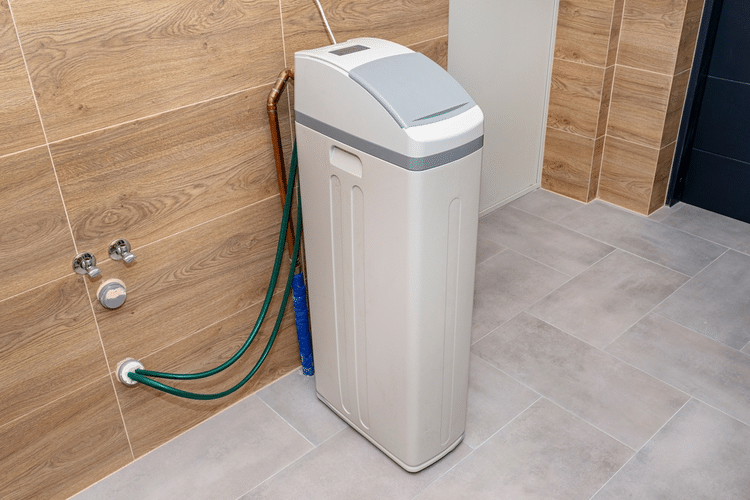
Can a Water Softener Cause Low Water Pressure?
Yes, a water softener can cause low water pressure. However, to ensure that the root cause is the softening device, you can simply bypass it and see if the water pressure is back to usual.
If the pressure is back to normal, you should check the following:
- The flow rate of the device,
- The pre-filters,
- Whether there are any clogged parts within the device,
- Whether resin beads have escaped through the softener media or membrane.
Unsuitable Flow Rate
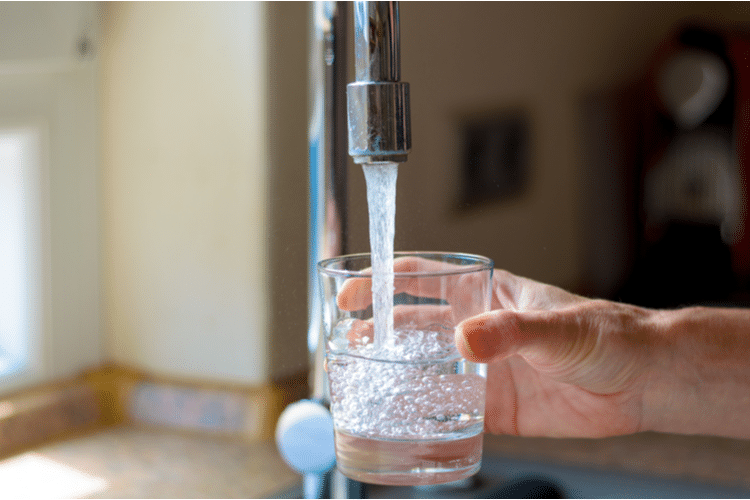
The flow rate of a water softener signifies how much water it can soften in a given period of time and is mostly measured in gallons per minute (gpm). More often than not, the manufacturer will provide how many bathrooms or faucets the flow rate of their device can accommodate.
Devices designed for the water needs of households with 1 to 3 bathrooms usually have a flow rate in the range of 7-12gpm. As the number of bathrooms in the household increases, the flow rate of the device should increase as well. The SoftPRO Elite, for example, comes with a 32gpm flow rate option, which is enough to soften water for commercial spaces like offices and restaurants.
Fortunately, there’s an easy way to determine if the device’s flow rate is adequate. If the device can’t handle your household’s water needs, you’ll have a problem from day one – you’ll notice a drop in water pressure from your faucets within a day of installing it.
Clogged Pre-Filters
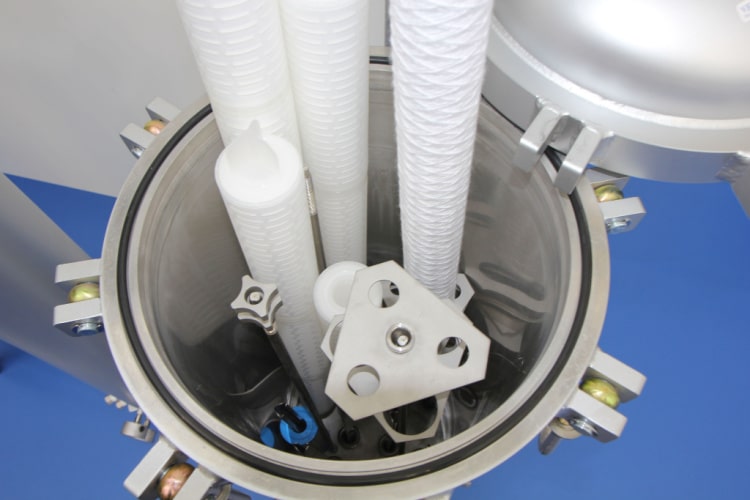
Water softeners don’t remove contaminants from water. Some dirt, debris, sediment, chemicals, and heavy metals might sneak into the system, reduce the efficiency of the resin, or even cause the system to break down altogether.
To prevent that, some manufacturers upgrade their devices with pre-filters that remove dirt and sediment from the water before it enters the softening process. However, since these filters sometimes have to deal with high levels of contaminants and are subjected to untreated hard water that can be quite abrasive, they’re prone to clogging.
When these pre-filters are not replaced in time, such build-up might block the water flow over time, leading to a decreased water pressure at your faucets, which is ironic, considering they’re technically added to increase it. This can happen if you don’t take care of the pre-filters as instructed by the manufacturer.
Clogged Water Softener Components
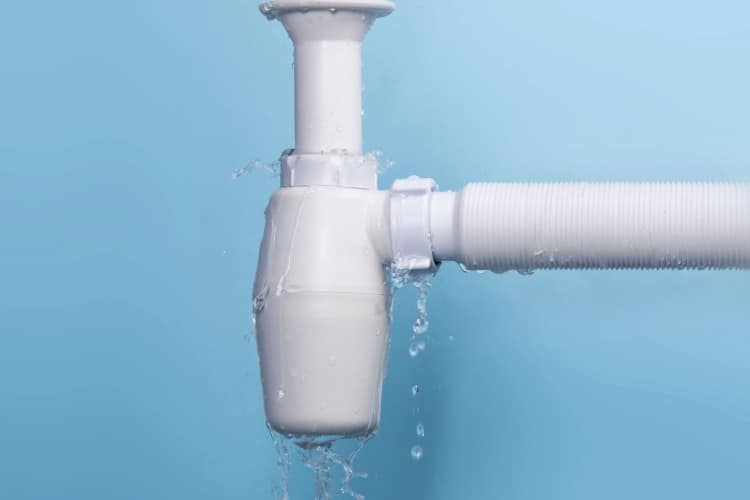
A water softener consists of many parts that can get clogged due to mineral buildup or salt clumps, and all of them might affect the water flow one way or another. Some components that are more prone to clogging include the resin bed, softener media, brine hose, brine injector, drain line, and brine control valve.
The brine hose, brine injector, drain line, and brine control valve don’t have an immediate impact on the flow rate of the device. Rather, when they’re clogged, they reduce the effectiveness of the brine solution in recharging and cleaning the resin beads since the brine that makes it to the resin tank during the regeneration cycle is not enough.
If the resin beads aren’t properly recharged or they’re left dirty, their efficiency also decreases. In the end, they are either unable to soften the water as much or the dirt clogs the resin bed and disrupts the water flow.
Similarly, if there’s too much iron in your water supply, a common issue in well water across the USA, your water softener might not be handling it well. The iron can build up in the resin and block the water flow.
Escaped Resin Beads
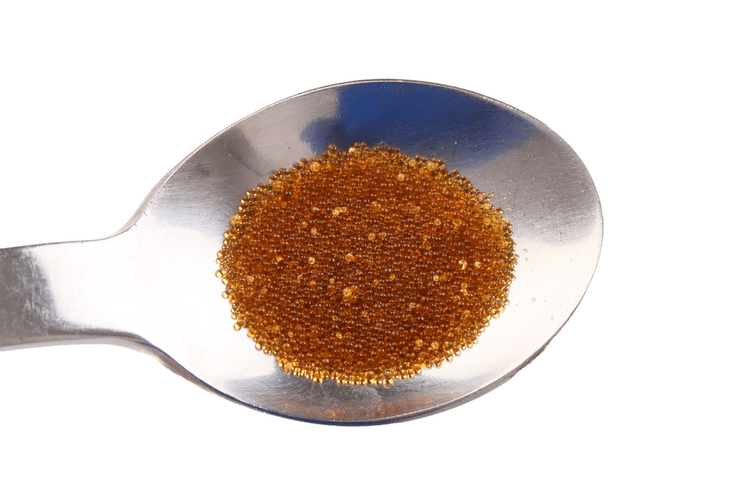
Resin beads can erode and become loose when the resin is subjected to too much chlorinated water or algae buildup inside the softener. That’s typically the case when there are no pre-filters that can remove chlorine and algae from entering the softening system. The same thing can happen if you didn’t follow the resin replacement guide for your device to the letter when you last replaced them.
As a result, the beads can leave the resin bed and end up in the pipes and even faucet aerators. Depending on the severity of erosion and the number of beads that have escaped, they might even block the entire water flow and potentially damage the piping system.
Fortunately, this issue is easy to identify since loose resin will also affect the color of the water. In addition to the decreased water pressure, if you notice the water has turned yellow or orange, then escaped resin beads are the most likely issue.
How to Troubleshoot Low Water Pressure From Water Softener
Below are our recommended solutions for each softener-related issue that can lead to low water pressure.
Unsuitable Flow Rate
If the flow rate of your device can’t meet the soft water needs of your household, the only solution is to invest in another unit with a better flow rate.
We’ve seen our fair share of online guides that tell people how to increase the low flow rate of a softening device. However, increasing the flow rate in ways that the device isn’t designed for will only decrease its efficiency. Your water won’t be soft enough because the hard water will have less contact time with the resin.
If you try DIY solutions to increase the flow rate, you also run the risk of damaging the device in a way that the warranty won’t cover. Therefore, we recommend repurposing or reselling your current water softener (if it’s in good condition) and buying a new one that will better fit your household needs.
In that regard, we recommend checking out our guide on the best water softening systems currently on the market, in which we give detailed information about what flow rate means and how to choose the right device for you. Additionally, you might use a water softener sizing calculator to decide which flow option fits your needs best.
Clogged Pre-Filters
Troubleshooting clogged pre-filters varies from brand to brand and from type to type.
For example, Kenmore pre-filters don’t need to be replaced, but they need to be washed regularly. On the other hand, most other water softener manufacturers, like Aquasana, for example, require you to replace the pre-filters constantly.
So, if you have low water pressure because of a clogged pre-filter, you should first check the instruction manual of your device to see about the course of action recommended by the manufacturer. If there’s no info in the manual, you may also contact the customer service of the manufacturer.
Then, you may decide if cleaning or replacing the pre-filter is the right course of action.
Lastly, if you’re in the market for a new device, it would be sensible to get detailed info on what kind of a pre-filter it features and how you should maintain it.
Clogged Water Softener Components
As we established above, there are many softener components that might get clogged and affect the water pressure.
In this category, the resin bed is the main culprit for low water pressure, and cleaning a resin bed also requires you to seek guidance from the instruction manual or the manufacturer. Depending on their advice, you may be able to clean it with bleach, vinegar, or a water softener resin cleaning solution that’s specifically designed for this purpose.
We have step-by-step guides on how to proceed with these sanitizers that we recommend you consult:
- Can I Put Bleach in My Water Softener?
- Can I Put Vinegar in My Water Softener?
- How to Clean Water Softener Resin and Brine Tank
Clogging in the brine hose, brine injector, drain line, and brine control valve of the device won’t directly decrease the water pressure in your household. But, they might cause problems like standing water inside the brine tank, which might lead to a decreased water pressure because it’ll reduce the system’s efficiency.
To learn how to troubleshoot this issue, you may read our 10 Reasons for Standing Water Inside the Brine Tank article.
In addition, if salt bridges have formed inside the water softener, you’ll want to remove them as soon as possible. We have the right guide for that, too: Why Does Water Softener Salt Bridge Occur and How to Remove It?
Escaped Resin Beads
Solving the escaped resin beads problem depends on the severity of the erosion and the clogging they caused.
If the beads are too eroded, flushing the pipes will be enough to eliminate them. To that end, after turning off and cleaning all water-related devices (softener, filter, heater, etc.), running all the hot water taps for 15 minutes and cold water taps for 5 minutes should do the trick. You may lengthen that period if the water doesn’t turn back to normal.
However, if the beads are still intact, they might not come out after you flush. In this case, you might want to contact a professional plumber.
Of course, in the end, you need to find a resin replacement for your water-softening unit.
Conclusion
A water softener system might cause a decrease in the water pressure of your household due to four main factors. These are unsuitable flow rates for your soft water needs; clogged pre-filters that have become dysfunctional, clogged system components; or resin beads that have escaped into the piping system of your house.
If you have a device with an unsuitable flow rate, you might consider replacing it, or you’ll have to get used to living with low water pressure. Depending on the manufacturer’s instructions, clogged pre-filters must be replaced or cleaned carefully.
Clogged components need to be cleaned. If they’re damaged, they should be replaced. Finally, to get rid of escaped resin beads, you need to flush the piping system of your household. If the water doesn’t return to normal, it’s time to seek help from professionals.
To learn more about how to troubleshoot problems that are related to water softeners, you may head to our other water softener guides.